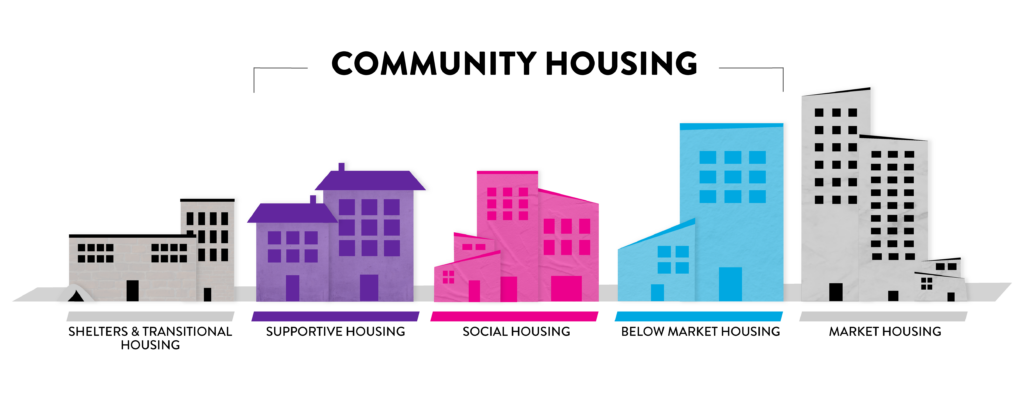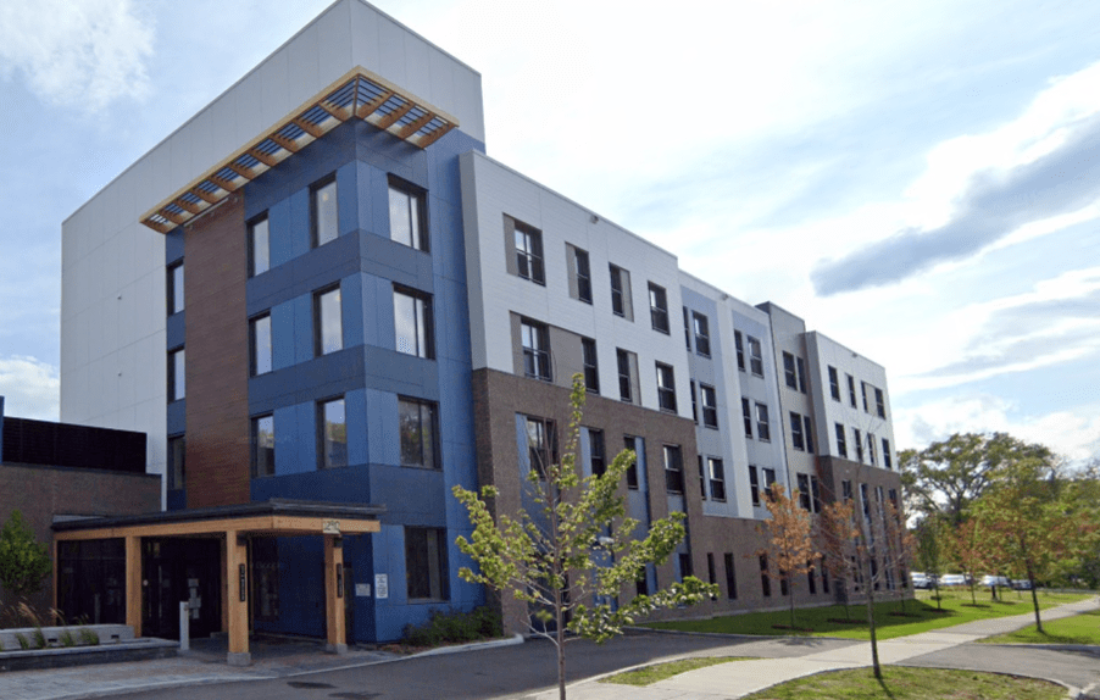Community housing is Ontario’s best investment
Community housing (also known as non-profit housing) has proven to be the most effective way to create affordable homes and keep them affordable. Strong investments help create inclusive communities that fill housing’s “missing middle” while also serving those that need support. With no built-in profit margin, every dollar goes to keeping rents affordable for the long-term.
Learn more about why community housing is Ontario’s best investment.
What is non-profit housing?
Community housing starts from the ground up, created by the community, for the community. There are close to 1,500 community-based non-profit housing providers spanning 220 communities across Ontario. You can find these diverse organizations in cities, towns, and rural areas. They range in size from four units to more than 50,000 units. They can include rooming houses, townhouses, and low-rise or high-rise apartment buildings.
Community housing offers homes to everyone, including families, seniors, people with disabilities, survivors of violence, and many others who private rental housing underserved or who need support for a successful tenancy. Some providers offer specialized supports for Indigenous peoples, seniors, people living with mental illness or addiction, and people who have experienced homelessness.
Types of community housing
- Private non-profit housing is owned and managed by independent, community-based groups such as faith groups and community agencies.
- Municipal non-profit housing is owned and operated by more than 100 different municipalities across Ontario.
- Local housing corporations are owned and managed by service managers, the local government body responsible for housing, social assistance, childcare and ambulance services.
A bridge in the housing continuum
Community housing is the bridge between homelessness and homeownership. It provides stability that enables people to rebuild their lives and contribute to their communities.

Shelters and transitional housing provide emergency support through immediate, temporary shelter and essential services to support individuals transitioning into stable housing.
Supportive housing and social housing provide housing with supports. They offer integrated services that combine stable accommodation with personalized support services. Mostly owned and operated by local housing corporations, non-profits, or cooperatives. Also includes government-supported housing programs that reduce rental costs, like rent-geared-to-income, providing access to below-market housing for eligible individuals and families.
Below market housing are housing options designed to be within reach for moderate-income households that can’t access government subsidies. This can include initiatives like new rental developments with rents set below prevailing market rates.
Market housing includes housing purchased or rented by individuals at market prices.
Accessing community housing
ONPHA does not own or administer any housing and cannot provide specific information related to the application process. Our mission is to build a strong community housing sector by representing and supporting non-profit landlords throughout the province.
In Ontario, local municipalities (referred to as service managers) administer rent-geared-to-income (subsidized) housing. People in need of affordable housing should contact the local coordinated access centre in their service area to join the waiting list. The access centre will provide application forms and more information regarding affordable and subsidized housing in your area.
